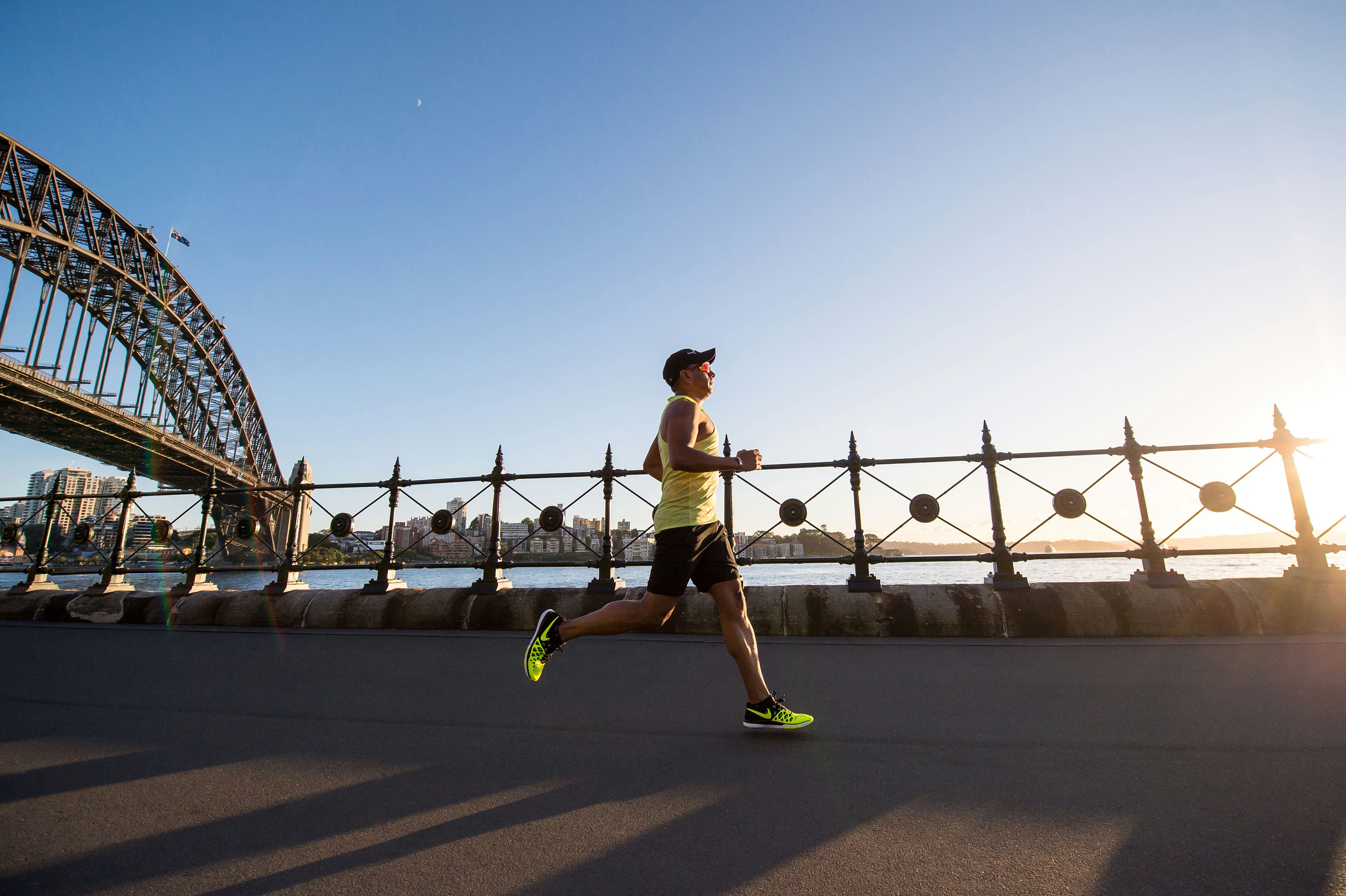
Photo by Bruno Nascimento on Unsplash
The quest for the most efficient form of exercise has been a key topic in health and fitness circles. It involves determining which activities yield the most significant benefits in the shortest amount of time and with the least risk of injury. Whether it’s to improve cardiovascular health, lose weight, or enhance overall fitness, efficiency in exercise is paramount.
Numerous studies and experts underscore the importance of incorporating physical activity into daily routines as part of a healthy lifestyle. The American Heart Association (AHA) recommends at least 150 minutes of moderate-intensity or 75 minutes of high-intensity exercise per week. How individuals choose to meet these guidelines—be it through walking, running, or other physical activities—can widely vary.
Choosing the right type of exercise can depend on several factors including personal fitness levels, objectives, and even the potential for injury. This section will set the stage for a deeper exploration into two popular forms of exercise—walking and running. Each has its merits and limitations when it comes to efficiency in achieving fitness or weight-loss goals. For a broader look at other efficient cardio exercises, consider visiting our page Benefits of Steady State Cardio.
This ongoing discussion about fitness efficiency is not just about advocating one form of exercise over another, but about finding what works best for an individual’s unique health needs and lifestyle, making it a vital conversation in the pursuit of health and wellness.
Verywell Fit provides valuable insights into this discussion, highlighting the personalized nature of exercise effectiveness, which we will delve into in the following sections of this article.
The Science of Fat Burning During Exercise
When we exercise, our bodies undergo a complex process aimed at burning fat and using energy from various sources. According to recent studies, while many believe that increased exercise intensity directly correlates with fat burning, the reality is more nuanced.
Exercise triggers the release of fatty acids into the bloodstream through a process known as lipolysis. High-intensity workouts lead to significant lipolysis, but interestingly, they do not necessarily increase fatty acid oxidation – the process where fatty acids are broken down for energy (Harris and Kuo, 2021). Instead of being used for immediate energy, these fatty acids may play a role in tissue repair and muscle regeneration after workouts.
An intriguing aspect of exercise-induced fat loss is the redistribution of nutrients. During high-intensity exercise, muscle and other tissues might demand more nutrients, which were previously stored as fat in adipose tissues. Essentially, the body starts utilizing the stored fat for healing and replenishing the muscles rather than for immediate energy.
Studies also indicate that the timing of meals around exercise can influence how effectively nutrients are redirected from fat stores to muscle tissue. Consuming a meal after a workout can help redirect these nutrients to muscle cells instead of them returning to fat cells, hence aiding in overall fat reduction while promoting muscle growth.
To learn more about how exercise specifically impacts abdominal fat, consider reading about how different exercises like running influence fat loss on our detailed page here: Does Running Burn Belly Fat?.
Understanding these mechanisms can help in optimizing exercise routines for better fat loss outcomes, emphasizing the importance of exercise intensity and nutrient timing over simply increasing the duration of workouts.
Detailed Comparison: Energy Expenditure in Walking vs. Running
When comparing the energy expenditure of walking versus running, significant differences emerge. According to a study by Cameron Hall and colleagues, running consumes more energy than walking when covering the same distance. For instance, completing 1600 meters requires about 481 kJ when running and 340 kJ when walking on a treadmill (Hall et al., 2004). This pattern holds true on a track, with slightly different energy values but a consistent gap showing higher expenditure in running.
The research also evaluated different prediction equations for walking and running to see how accurately they estimate actual energy expenditure. It turns out that LEGER and ACSM formulas for running and the Pandolf equation for walking closely mirror actual energy outputs.
These findings underscore running’s higher caloric burn compared to walking, making it a more intense workout option for the same distance. For those looking into a detailed breakdown of how different cardio exercises burn calories, the comparison between indoor cycling and treadmill might offer additional insights. This section also addresses different modalities, helping you understand how various factors influence calorie burning during exercise.
Pro and Cons of Walking and Running for Weight Loss

Photo by Sincerely Media on Unsplash
Walking:
Pros:
- Accessibility: Walking is an exercise that nearly everyone can do without special equipment or training.
- Reduced Risk of Injury: As a lower-impact activity, walking is less likely to cause injuries compared to high-impact exercises.
- Consistency: It’s easier to walk daily, making it simpler to maintain a regular exercise habit.
Cons:
- Slower Calorie Burn: Walking burns fewer calories per minute, so it takes longer to achieve the same energy expenditure as running.
- Time Intensive: To match the calorie burn from running, you may need to commit more time to walking.
Running:
Pros:
- Efficient Calorie Burning: Running burns more calories in less time, aiding quicker weight loss efforts. A study in Medicine & Science in Sports & Exercise highlights that running elevates the heart rate more significantly than walking, leading to higher calorie burn (EatingWell).
- Afterburn Effect: Post-exercise, running continues to burn more calories compared to walking due to its intensity level.
Cons:
- Higher Injury Risk: Running has a higher impact on joints and muscles, increasing the risk of injuries, particularly in unconditioned individuals or those with pre-existing conditions.
- Requires Recovery: Due to its intensity, running demands more recovery time, which might limit the frequency of workouts.
Sustainability:
- Walking offers a sustainable way to lose weight for many people, especially those new to exercise or with joint issues.
- Running provides quick results in terms of calorie expenditure and might be suited for those looking for more intense physical activity but could be challenging to maintain over time without proper conditioning and rest.
For readers interested in exploring different types of cardio workouts, we also discuss the effectiveness of various cardio machines on weight loss. Learn more at Cardio Machine Insights.
Choosing between walking and running depends significantly on personal health, fitness level, time availability, and enjoyment. Both can be effective for weight loss when coupled with consistent effort and a balanced diet.
How to Optimize Your Exercise Routine for Maximum Fat Loss
Optimizing your exercise routine for maximum fat loss requires a blend of strategic planning and understanding the role of different workout timings. As highlighted by Harvard Health, exercising at different times of the day can have varying impacts on your body’s ability to burn fat. According to Dr. Beth Frates, experimenting with exercise timing, such as before or after breakfast, can influence how much fat your body burns. Dr. Frates suggests trying both to see which yields better weight loss results for you [source].
To further enhance your fat loss efforts, integrating high-intensity interval training (HIIT) can be beneficial. HIIT involves short bursts of intense exercise followed by rest periods. This method not only burns a high number of calories during the workout but also increases your metabolic rate after exercise, leading to more calories burned over the course of the day.
Moreover, consistency is key in any fat loss plan. Setting a regular exercise schedule helps you maintain a routine and improves long-term adherence. Whether you decide morning, afternoon, or evening works best for you, sticking to a consistent time can improve your performance and results.
For those interested in specific exercise impacts, consider visiting our page on the benefits of cardio in the morning for more insights on optimizing morning workouts for fat loss.
Success Stories: How Different Approaches Worked for Individuals

Photo by Chander R on Unsplash
Both highly focused and more relaxed approaches to achieving personal goals show diverse yet significant impacts on individuals’ success. Taking instances from real-life scenarios, we witness different levels of prioritization and methods influencing outcomes. For instance, medical students, deeply immersed in their studies, tend to allocate around 10 hours daily, though not all these hours are efficiently used. They often find themselves engaged in less productive activities like extended breaks or unintended social gatherings like in the Starbucks. This example clearly illustrates that even with a seemingly singular focus approach, not every moment becomes productive, yet many achieve their ultimate goal, becoming doctors.
On the other hand, individuals who follow a less stringent, more enjoyable approach to life goals, prioritize personal happiness and a broad spectrum of experiences. This approach may seem inefficient in traditional success terms but offers richer self-awareness and balanced life satisfaction. Such individuals might partake in various activities: social gatherings, diverse hobbies, or alternating job roles, leading to enriched interpersonal relationships and personal growth.
These narratives underline that success is personal and non-linear, often dressed in the unique attires of the individuals’ personalities and life situations. Each approach has merits and depends largely on individual definitions of success and personal circumstances. Additionally, individuals interested in optimizing their fitness routines for better health outcomes and efficient fat burning can find valuable insights and tips on how much cardio to perform weekly for effective fat loss.
Expert Opinions on Walking vs. Running for Fat Loss
When comparing walking and running for fat loss, experts acknowledge the benefits that both exercises offer. According to a health and fitness expert, whereas running is known for its high calorie-burning capacity, walking shouldn’t be underestimated. A study published in the Medicine & Science in Sports & Exercise magazine suggests that the intensity of running elevates heart rate and calorie expenditure more significantly than walking. However, the overall effectiveness in terms of fat loss might not differ greatly if the energy expenditure is matched over a period (Meyer, 2024).
Rachel MacPherson, an ACE-certified personal trainer, elaborates on this by illustrating the potential caloric burn achievable through both activities. For example, walking briskly for one hour daily can culminate in approximately 1,800 calories burned per week for a 150-pound individual. On the other hand, running for 30 minutes at a speed of 6 mph three times a week accounts for about 1,710 calories burnt (Meyer, 2024). This illustrates that while running might have a higher per-minute calorie burn, walking can closely compete with running when performed consistently and for longer durations.
Moreover, MacPherson points out that sustaining a running program can be challenging due to its demanding nature on the body, possibly necessitating more recovery time. This makes walking a more feasible option for many people seeking long-term fat loss solutions. For those concerned about joint health or who find running too strenuous, walking provides a gentler alternative that can still effectively aid in achieving a calorie deficit, essential for weight loss.
For more insights on optimizing your fat loss strategies through cardio exercises, visit our article on the benefits of consistent cardio practices here.
EatingWell – Is Running Better than Walking for Weight Loss?
Final Thoughts: Which is Better for Your Specific Needs?
Deciding whether walking or running is better for you hinges on your personal health goals, physical condition, and preferences. If weight loss is your primary aim, running may offer a quicker route by burning more calories per minute. However, it’s also more demanding on the body and can lead to a higher risk of injuries compared to walking.
For those seeking a gentler, low-impact option due to joint concerns or other health issues, walking might be the preferable choice. It’s sustainable over long periods and less likely to cause strain or injury. Reflecting on your long-term ability to stick with the exercise is crucial for consistent weight management and health benefits.
Additionally, lifestyle compatibility matters. Evaluate how well each activity blends with your daily routine and which is more likely to be a consistent part of your life. Some might find brisk morning walks more practical and enjoyable than fitting in runs, which impacts long-term commitment and results.
For insights on caloric burn and efficiency between similar exercises, consider visiting our article on treadmill versus exercise bike comparison here, which offers additional data to aid your decision.
Ultimately, the best choice is one that aligns with your personal health requirements, enjoyment, and sustainability. Engaging in an activity you enjoy is the key to maintaining a regular exercise routine.